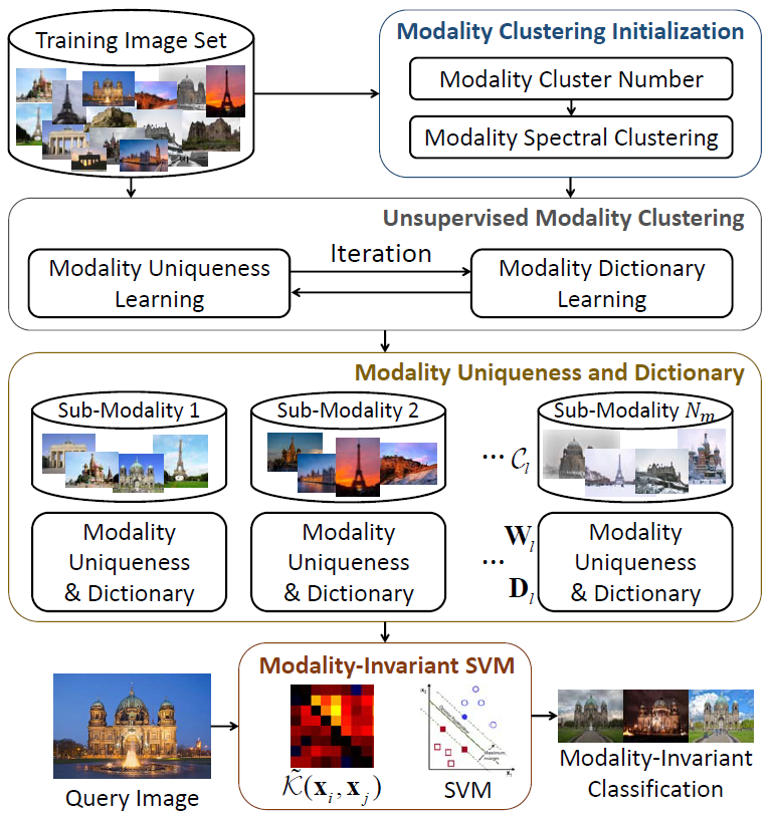
|
Examples of similarity kernel for images under challengingly varying modality conditions. (a)-(d) Tower bridge images taken under snow condition in (a), (b) and sunset condition in (c), (d) with their corresponding deep CNN activation features (4096-d) [3]. (e)-(h) Stonehenge images taken under snow condition in (e), (f) and sunset condition in (g), (h). In conventional similarity kernel (e.g., inner product) as in (i), the similarity between images derived from same modality is higher than that between images derived from a similar category, which limits the performance of conventional methods. Unlike this conventional kernel, the proposed kernel is robust to photometric variations.
|
